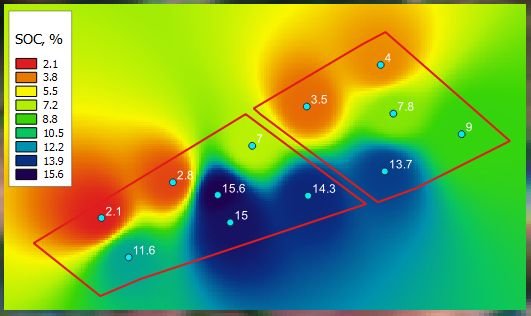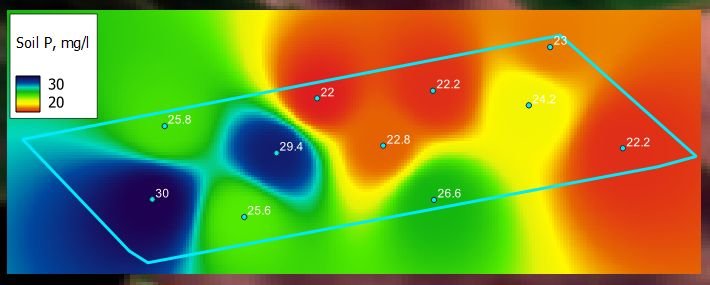Selecting the best sampling approach for your project, taking into account Environmental Parameters
In our earlier blog, discussing Sampling Plans leveraging Brix, TA and pH Heatmaps, we touch on the importance of field collection of samples and related problems, used for accurate calibration predicting Machine Learning models and high-quality estimates of maturity parameters. In the meantime, ground truthing is crucial for observation and predictions the parameters of any environmental phenomena, using remote sensing data. Among crucial environmental parameters, predicted by Deep Planet and requiring accurate calibration and validation data, are the soil chemistry, including soil macronutrients (N, P, K) and Organic Carbon.
As it was mentioned, the problems with collection ground truth data primarily derive from the designing the highly efficient sampling plan, most fully describing the variability of estimated soil nutrient parameter within a field; fitting within the adequate budget and reducing labour costs.
Deep Planet uses several approaches in designing sampling plans. We generally use three different strategies: grid-based, stratified random and zone-based, depending primarily on the area and shape of the field. All sampling plans we develop provide the most accurate description of variability of measured parameter and target to reduce the cost of samples.
The most important parameter affecting the efficiency of a sampling campaign is the number of samples. However, soil sampling locations can be distributed within a field different way. The most efficient sampling approach can be chosen individually on a basis of such parameters, as the shape of the field, its area and length to width ratio.
We usually suppose up to 25 samples in total for fields with the area up to 100 hectares (approximately 250 acres), depending on the field dimensions and shape (in average 1-2 samples/ha). Larger farms usually have a lesser density and smaller number of samples. To improve the effectiveness of soil sampling we also supplement the sampling programs by pre-analysis the variability of a predicted feature using environmental parameters and datasets - NDVI, DEM and Soil Texture.
Previously we conducted experiments for dozens of vineyards and different agricultural crop fields, testing the performance of different soil sampling strategies. Our experience shows, that stratified random sampling and a grid-based strategy provide the best spatial coverage and best describe the variability of the parameter being estimated, providing optimal cost-effectiveness in case of adequate sampling density; whereas the zone-based approach provides lower detailed information for large areas, and it remains the appropriate solution for limited budget.
Grid-based sampling
Grid-based sampling provides the optimal coverage, but can less efficiently reflect the variability of the estimated parameter
Example of Grid-based sampling
Random sampling
Used for fields, where it’s difficult to define a regular grid. It includes simple random sampling and stratified random sampling - a combination of grid-based and random sampling - efficient and unbiased approach for fields of irregular shape
Simple random sampling
Example of simple random sampling
Stratified random sampling
Example of stratified random sampling
Stratified Zone based sampling
This approach assumes defining of zones using differences of one or several environmental parameters within the field: soil texture, elevations, vegetation indexes. Zone-based sampling supposes taking a certain number of samples from each zones, reducing an overall number of samples to be taken and it is a perfect solution for a limited budget.
Example of stratified zone based sampling
Deep Planet has been developing an automated planning of soil sampling campaigns, suggesting the optimal number of samples or designing sampling plans on a basis of a known number of samples. We also suggest the parameters of soil to be analysed according to a budget plan and cost of taking a single soil sample.
If you have sampling plans or stratification needs on your next project and want help on the most cost effective and efficient methods to achieve your project outcomes, reach out to us at hello@deepplanet.ai.




